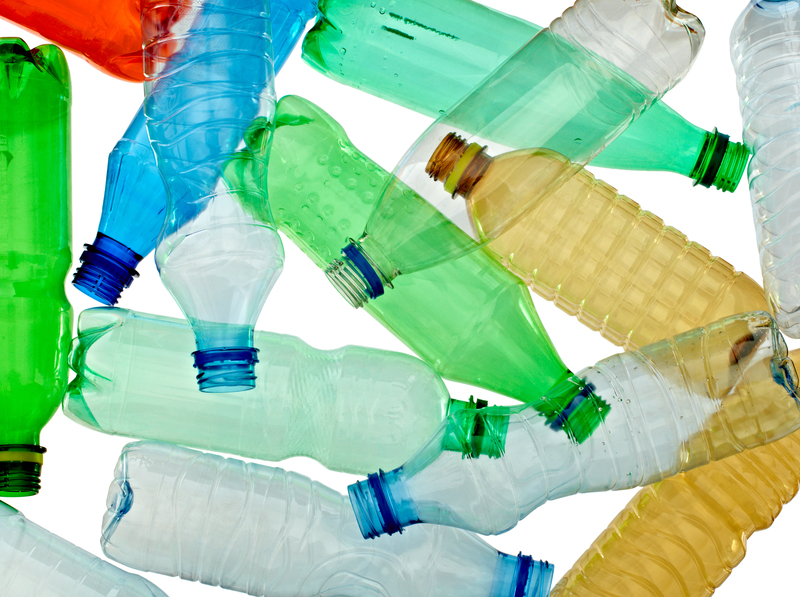From Waste to Plastic
Posted on 18/08/2025
The world is facing a significant environmental crisis due to the excessive generation of waste. Traditional waste management practices are not enough to tackle this issue, making it critical to explore innovative solutions. One such promising approach is converting waste materials into plastic. This method not only helps in managing waste effectively but also provides an eco-friendly alternative to conventional plastics. In this article, we will delve into the process, benefits, challenges, and overall impact of turning waste into plastic.

The Growing Problem of Waste
Waste generation has seen a significant increase over the past few decades. According to the World Bank, global waste generation is expected to reach 3.4 billion tonnes by 2050. The majority of this waste ends up in landfills, causing severe environmental and health issues. The need for sustainable waste management practices has never been more urgent.
What Is Waste-to-Plastic Technology?
The term "waste-to-plastic" refers to the process of converting various types of waste materials into plastic products. This can include anything from agricultural waste, municipal solid waste, to even industrial by-products. The technology involves several stages, including collection, sorting, cleaning, and finally, the conversion process itself, which can be chemical or biological.
The Process of Converting Waste to Plastic
1. Collection and Sorting: The first step involves collecting different types of waste materials. Sorting helps in separating recyclable materials from non-recyclable ones. This stage is crucial as it determines the quality of the final product.
2. Cleaning: The sorted waste materials are then cleaned to remove any contaminants. This is essential to ensure that the final plastic product is of high quality.
3. Conversion: The cleaned waste materials are then subjected to either a chemical or biological process to convert them into plastic. Chemical processes may involve techniques like pyrolysis, where waste materials are decomposed at high temperatures in the absence of oxygen. Biological processes may involve the use of microbes that can break down organic waste into plastic.
4. Manufacturing: The converted plastic is then used to manufacture various products, ranging from packaging materials to construction items.
Benefits of Waste-to-Plastic Technology
1. Waste Reduction: One of the most significant advantages is the reduction of waste that would otherwise end up in landfills or oceans.
2. Resource Conservation: This technology helps in conserving natural resources by providing an alternative to conventional plastic, usually derived from fossil fuels.
3. Energy Efficiency: Some waste-to-plastic processes are energy-efficient, contributing to a reduction in overall energy consumption.
4. Economic Benefits: It creates job opportunities in the waste management and plastic production sectors, boosting the economy.
Challenges and Limitations
1. High Initial Costs: Setting up a waste-to-plastic conversion facility requires significant investment, which can be a barrier for many regions.
2. Quality Control: Ensuring the quality of the final plastic product can be challenging, especially when dealing with mixed waste materials.
3. Environmental Concerns: Some conversion processes may release harmful gases or chemicals, requiring strict environmental controls.
4. Public Awareness: There is still a lack of awareness and understanding among the public about the benefits of waste-to-plastic technologies, which can hinder widespread adoption.
Tips for Supporting Waste-to-Plastic Initiatives
1. Educate Yourself and Others: Knowledge is power. Educate yourself about waste management and share this information with your community.
2. Support Policies: Advocate for policies that promote sustainable waste management and the use of waste-to-plastic technologies.
3. Reduce, Reuse, Recycle: Practice these three Rs in your daily life to contribute to waste reduction.
4. Participate in Local Initiatives: Engage in local waste collection drives and support businesses that are adopting sustainable practices.

Takeaways
- Sustainability: Waste-to-plastic technology offers a sustainable way to manage the growing problem of waste.
- Innovation: This approach leverages innovative processes to convert waste into valuable products.
- Challenges: Despite its benefits, the technology faces several challenges, including high costs and quality control issues.
- Community Effort: Public awareness and community participation are crucial for the success of waste-to-plastic initiatives.
Conclusion
The transformation of waste into plastic is a forward-thinking solution to the global waste crisis. By converting waste materials into valuable products, we not only manage waste more effectively but also reduce our dependence on fossil fuels. While the technology comes with its own set of challenges, the benefits far outweigh the drawbacks. With collective effort and awareness, we can make waste-to-plastic transformation a cornerstone of sustainable waste management, paving the way for a greener future.
Pros:
- Reduces waste
- Conserves resources
- Energy-efficient processes
- Economic benefits
Cons:
- High initial costs
- Quality control issues
- Environmental concerns
- Lack of public awareness
Tips:
- Educate yourself and others
- Support sustainable policies
- Practice reduce, reuse, recycle
- Participate in local initiatives





